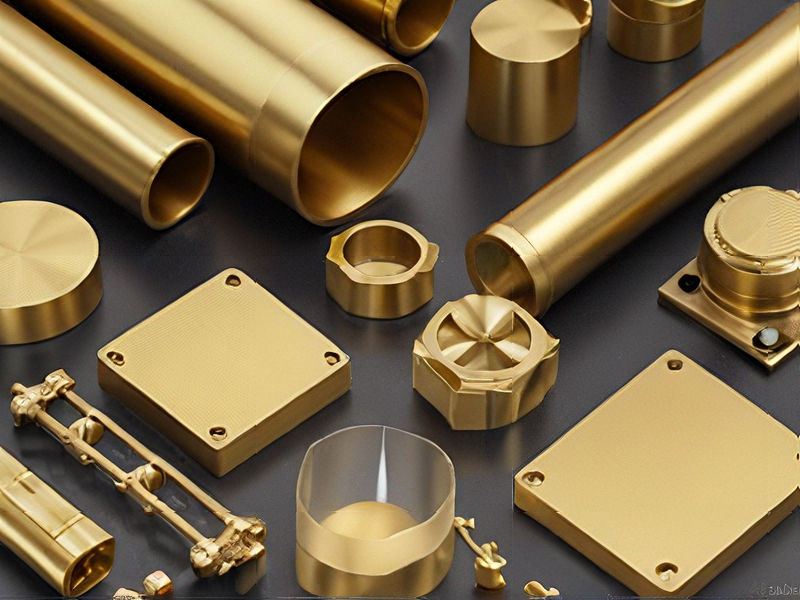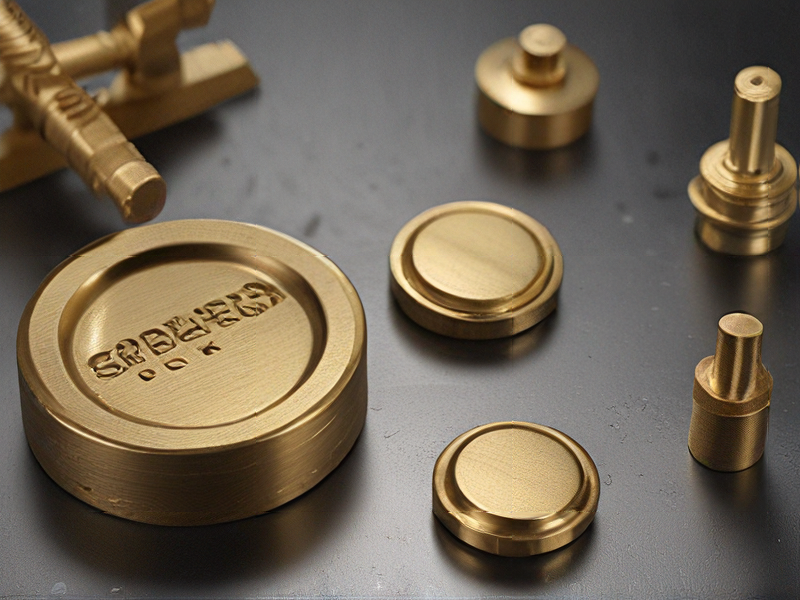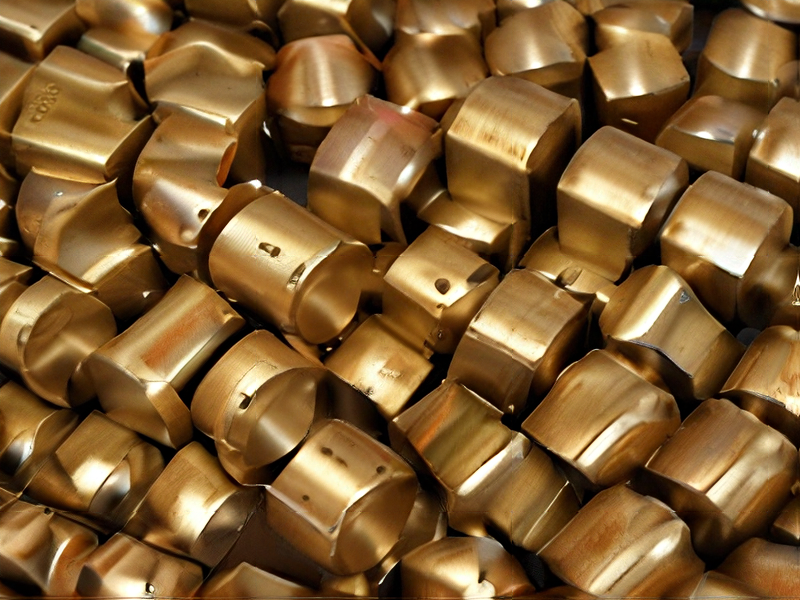Technology and Applications of brass metal composition
Brass is an alloy primarily composed of copper and zinc. The proportion of these metals can vary widely, affecting the alloy’s properties such as strength, corrosion resistance, and color. Typically, brass contains between 55% to 95% copper and 5% to 45% zinc. Small amounts of other metals like lead, tin, aluminum, or nickel may also be added to achieve specific characteristics.
Applications:
1. Musical Instruments: Brass is famously used in the manufacturing of musical instruments like trumpets, trombones, and saxophones due to its acoustic properties and malleability.
2. Plumbing and Fittings: Its excellent corrosion resistance makes brass fittings and pipes ideal for plumbing applications, ensuring durability and longevity.
3. Decoration and Ornaments: Brass’s attractive gold-like appearance and ease of shaping make it popular for decorative purposes, including statues, jewelry, and home decor.
4. Electrical Components: Brass is used in electrical connectors and terminals due to its excellent electrical conductivity and machinability.
5. Industrial Parts: Its combination of strength, machinability, and wear resistance makes brass suitable for industrial components like valves, bearings, and gears.
Technological Advancements:
Modern technology has enhanced brass production and application through:
– Advanced Manufacturing Techniques: Such as CNC machining and additive manufacturing, enabling intricate designs and precise components.
– Alloy Development: Fine-tuning compositions to achieve specific mechanical, electrical, or aesthetic properties.
– Surface Treatments: Electroplating and coatings improve corrosion resistance and aesthetics.
Environmental Considerations:
Efforts are ongoing to reduce the environmental impact of brass production through recycling and sustainable practices, aligning with global sustainability goals.
In conclusion, brass’s versatility and reliability continue to ensure its essential role in diverse industries, supported by ongoing technological advancements and environmental stewardship.

Quality Testing Methods for brass metal composition and how to control quality
Quality Testing Methods for Brass Metal Composition:
1. Spectroscopy (XRF, OES):
– X-ray Fluorescence (XRF): Non-destructive technique to determine elemental composition.
– Optical Emission Spectroscopy (OES): Analyzes the emission spectrum to identify and quantify elements.
2. Chemical Analysis:
– Wet Chemical Methods: Traditional, accurate but time-consuming techniques for determining metal composition using chemical reactions.
3. Microscopy:
– Scanning Electron Microscopy (SEM): Provides detailed images and composition analysis at micro-level.
– Optical Microscopy: Inspects grain structure and phase distribution.
4. Mechanical Testing:
– Hardness Testing: Measures resistance to deformation, indicating material consistency.
– Tensile Testing: Assesses strength, ductility, and other mechanical properties.
5. Density Measurement:
– Determines material density, indirectly indicating composition consistency.
Quality Control Methods:
1. Standardization:
– Adhere to industry standards (e.g., ASTM, ISO) for material specifications and testing procedures.
2. Batch Testing:
– Test samples from each production batch to ensure consistent quality.
3. Statistical Process Control (SPC):
– Use statistical methods to monitor and control the manufacturing process.
4. Calibration and Maintenance:
– Regularly calibrate and maintain testing equipment to ensure accuracy.
5. Supplier Quality Management:
– Implement rigorous supplier evaluation and quality audits to ensure raw material quality.
6. Traceability:
– Maintain detailed records of material origin, processing, and testing to trace back any quality issues.
7. Training:
– Regularly train staff on quality control methods and standards to ensure best practices.
By employing these methods, manufacturers can ensure the brass composition meets required standards, thereby controlling quality effectively.

Tips for Procurement and Considerations when Purchasing from brass metal composition
When procuring brass, a metal alloy composed primarily of copper and zinc, several key considerations are essential to ensure quality and suitability for your intended use. Here are some tips and considerations:
Tips for Procurement:
1. Supplier Verification: Choose reputable suppliers with a history of delivering high-quality brass. Check for certifications and customer reviews.
2. Quality Standards: Ensure the brass meets relevant industry standards such as ASTM (American Society for Testing and Materials) specifications.
3. Material Specifications: Clearly define the grade and type of brass you need. Common types include C260 (Cartridge Brass), C360 (Free Machining Brass), and C385 (Architectural Bronze).
4. Sample Testing: Request samples for testing before committing to large orders. This helps verify the material’s properties and suitability.
5. Bulk Ordering: For cost efficiency, consider bulk purchasing, but balance this with storage capabilities and usage rates.
6. Lead Time: Understand the lead times required for manufacturing and delivery to ensure they align with your project timelines.
7. Cost Considerations: Compare costs from multiple suppliers, considering both price per unit and additional costs like shipping and handling.
8. Sustainability: Consider suppliers who use recycled materials or employ environmentally friendly manufacturing processes.
Considerations:
1. Composition and Properties: The ratio of copper to zinc affects the brass’s mechanical properties. For example, higher zinc content typically increases strength but may reduce corrosion resistance.
2. Mechanical Properties: Consider the required mechanical properties such as tensile strength, hardness, and ductility, which vary with brass type.
3. Corrosion Resistance: Brass generally offers good corrosion resistance, but specific applications may require enhanced properties. Select a brass type accordingly.
4. Workability: Different brass alloys have varying degrees of machinability, formability, and weldability. Choose an alloy that suits your manufacturing process.
5. Aesthetic Requirements: Brass is often chosen for its appearance. Ensure the alloy meets any aesthetic requirements for color and finish.
6. Regulatory Compliance: Ensure the brass complies with regulations relevant to your industry, such as RoHS (Restriction of Hazardous Substances) for electronic components.
By carefully considering these factors, you can ensure a successful procurement process that meets your project’s specifications and quality standards.

FAQs on Sourcing and Manufacturing from brass metal composition in China
Certainly! Here are some FAQs on sourcing and manufacturing brass metal compositions in China:
1. What are common brass compositions available from Chinese manufacturers?
Chinese manufacturers typically offer brass compositions ranging from simple alloys like CuZn40 (60/40 brass) to more complex compositions like CuZn37 (63/37 brass) or CuZn30 (70/30 brass), tailored to specific industrial or decorative applications.
2. How can I ensure the quality of brass materials sourced from China?
Ensure quality by conducting due diligence on suppliers, requesting material certifications (such as ISO, ASTM), and possibly arranging for third-party inspections or audits.
3. What are the typical manufacturing processes used in China for brass products?
Chinese manufacturers utilize processes such as casting, forging, machining, and electroplating to produce a wide range of brass components and products, ensuring flexibility in manufacturing capabilities.
4. What are the advantages of sourcing brass from China?
China offers competitive pricing due to economies of scale, a wide range of alloy compositions and product customization options, and a well-developed manufacturing infrastructure.
5. What should I consider when choosing a brass supplier in China?
Consider factors like supplier reputation, production capacity, adherence to quality standards, communication effectiveness, and their ability to meet your specific requirements and timelines.
By considering these FAQs, you can navigate sourcing and manufacturing brass compositions effectively from China while ensuring quality and meeting your project needs.

